
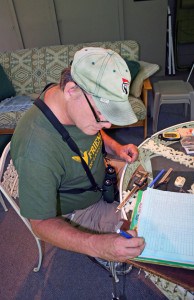
(Chelsea Update would like to thank Tom Hodgson and the Waterloo Natural History Association for the photos and information in this column.)
There are only about 150 people in the U.S. and Canada who are authorized to band hummingbirds. Master bird bander Allen Chartier is just one of three licensed in Michigan.
The Federal Bird Banding Laboratory located in Laurel, Maryland is the repository for all banding information collected in the U.S. and the only agency that issues bird banding permits. Chartier has been banding hummingbirds since 2000 and has banded 6,000 of the 10,000 hummingbirds banded in Michigan during that period. The information gleaned from banding and recapture has enabled scientists to learn much about the hummingbird’s natural history including longevity, migration habits, mating habits, site fidelity and population trends.
Chartier has developed very efficient banding procedures. Capture, banding, data recording and release takes only one to two minutes per bird. This minimizes the stress on the birds to the point where they are often seen returning to the feeders within minutes after their release.

The birds are captured with nearly invisible mist nets, or with remote release traps. The latter is the most efficient when used at sites where home owners are already feeding hummingbirds.
He bands in many areas in Southeast Lower Michigan including 10 sites located in and around the Waterloo Recreation Area. Although hummers are quite comfortable in back yard gardens in residential neighborhoods, natural areas like WRA provide important reservoirs for hummingbird populations.
While in hand, he weighs, measures and sexes each bird. A metal Fish and Wildlife band is then placed on the lower leg just above the foot. Each band contains a serial number that will identify each individual bird if recaptured. Chartier may also mark each bird on the forehead with a dot of colored dye.
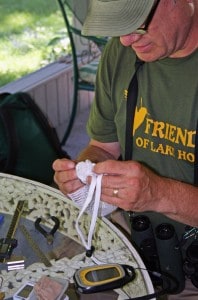
Birds at each local banding site are marked with a different color. This helps determine if birds are visiting more than one local site. The paint marking program has determined that birds may routinely visit other local sites as far as two miles from the site where they were marked. The dye wears off in a few weeks.
Here is some of the information the scientific community has learned about hummingbirds from the data collected by these volunteer bird banders.
About 15 percent of the hummingbirds return to the same nesting and feeding areas year after year. Our hummingbirds migrate to Southern Mexico and Central America for the winter. In spring, hummingbirds make a 500-mile, non-stop flight across the Gulf of Mexico from the Yucatan Peninsula to the U.S. mainland.
Female hummingbirds can live to be 7 years old while males rarely live more than 5 years.
Until this year, the oldest known ruby-throated hummingbird lived to be at least 9 years old. This record was broken this year by a female hummer recaptured by Chartier in the Waterloo Recreation Area.
She was 9.1 years old and had been captured six times over the years. It is estimated that she has flown between 35,000 and 50,000 miles in her lifetime.
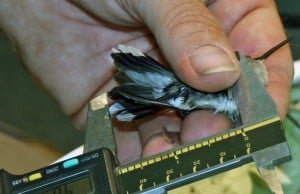
So, the Chelsea area now owns the new record for the oldest ruby-throated hummingbird ever confirmed.
The ruby-throated hummingbird population has yet to be adversely affected by climate change, has been growing steadily for the past several years, and is now estimated at about 7 million birds. Eighty-five percent of those nest in the U.S. and Canada.
You don’t have to be a licensed bird bander to help scientists learn about hummingbirds. Chartier is in charge of a research project called “Great Lakes Hummer Net.” There are many questions yet to be answered.
If you feed hummingbirds or have flowering plants that attract them, you can help. Chartier’s website here to find out how. You can become a citizen scientist and make a difference.
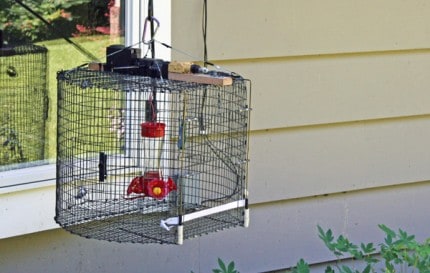







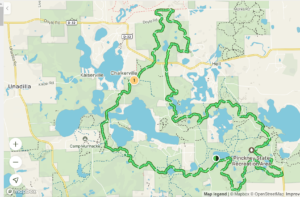






Normally we have many humming birds flocking all around our morning glories and impatients. This year I have only spoted a couple-several weeks ago.
I am puzzled by this.
Marcia,
This has been a cool wet summer with good moisture conditions for all the wild blooming plants. Perhaps the hummingbirds have more nectar sources to choose from this year. Adding a hummingbird feeder my draw them in.